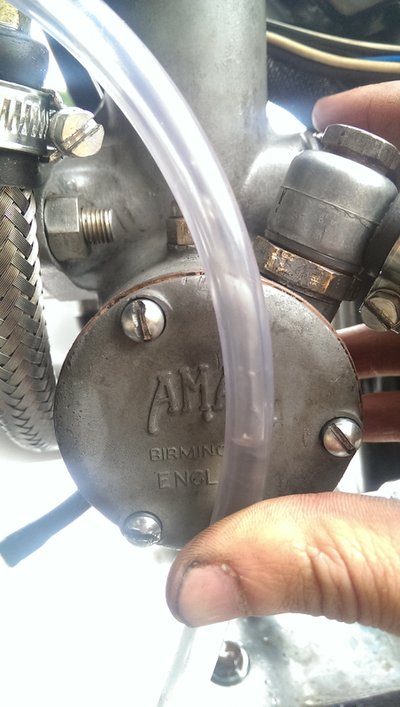- Joined
- Apr 22, 2020
- Messages
- 3,108
You might need x-ray vision to look through the float bowl cover and throttle body casting to determine where it is leaking from. 
Did these carburetors ever work on any motorcycle, or are they part of a used bike purchase? Could have been ruined by a previous owner using drill bits or who knows what after getting some interweb tuning advice.
If the float needle seat and float needle are matched, and everything is installed correctly, it looks like the only thing that could prevent the float from forcing the float needle up into the needle seat is the tickler rod not returning all the way up. Tickler spring too weak or a sticky tickler. Of course, there might be fuel dribbling out of the top of the tickler if that were the case. Not sure though. Never played much with a monobloc. The two brit bikes I had with a monobloc never gave me carburetor trouble.
If you can, turn your manifolds over so the balance tube loop is on top. It will tend to end up with a little residual fuel in it if it is on the bottom. Not a cure for your issue at all, just a better arrangement of the balance tube. If it is already on top fuel staying in it is miraculous.
Did these carburetors ever work on any motorcycle, or are they part of a used bike purchase? Could have been ruined by a previous owner using drill bits or who knows what after getting some interweb tuning advice.
If the float needle seat and float needle are matched, and everything is installed correctly, it looks like the only thing that could prevent the float from forcing the float needle up into the needle seat is the tickler rod not returning all the way up. Tickler spring too weak or a sticky tickler. Of course, there might be fuel dribbling out of the top of the tickler if that were the case. Not sure though. Never played much with a monobloc. The two brit bikes I had with a monobloc never gave me carburetor trouble.
If you can, turn your manifolds over so the balance tube loop is on top. It will tend to end up with a little residual fuel in it if it is on the bottom. Not a cure for your issue at all, just a better arrangement of the balance tube. If it is already on top fuel staying in it is miraculous.



